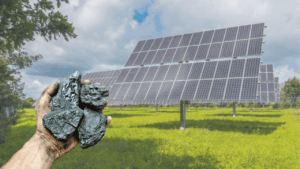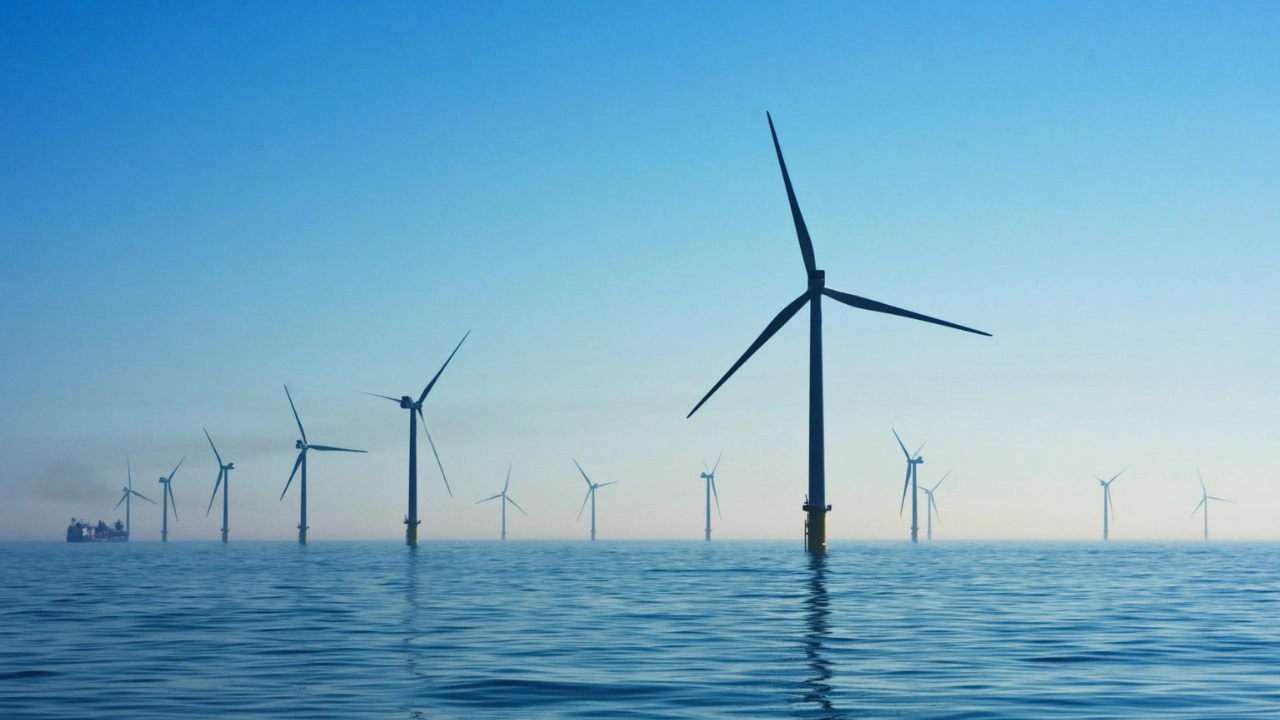At a time when the entire world is battling the climate crisis, Great Britain has set a record – 74% of the country’s electricity was generated from low-carbon sources in 2024. This number is not just a statistic, but proof that the UK is now moving full speed ahead on the path to clean power.

According to Carbon Brief’s analysis, Britain’s electricity mix was at its “safest and cleanest ever” in 2024. This means that the use of fossil fuels is steadily decreasing, and clean sources like wind, solar, and nuclear power have become the core of the system.
This data directly supports the UK Government’s Clean Power by 2030 pledge, which aims to make the entire electricity system fossil-free. According to the report, carbon intensity — which measures how much CO₂ is emitted per unit of electricity — will hit a record low in 2024, just 120gCO₂/kWh, a 68% drop compared to 1990.

Overview Table
| Article | First ever statistics on progress to clean power by 2030 show 74% of Great Britain’s electricity generated by low carbon sources in 2024 |
| Country | United Kingdom |
| Effective Year | 2024 |
| Department | UK Department for Energy Security and Net Zero (DESNZ), National Grid ESO, IRENA, Carbon Brief |
| Key Figures | 74% electricity from low-carbon sources; renewables covered 53%, nuclear 21% |
| Goal Year for Clean Power | 2030 |
| Official Website | www.gov.uk/desnz |
The Renewable Energy Threat: Wind and Solar Dominate
If we talk about the heroes of clean electricity, 2024 was definitely the year of wind and solar. According to a Bloomberg NEF report, wind farms alone supplied 34% of total power, while Solar’s contribution reached 7%—together, the two produced more power than coal and gas for the first time.
Offshore wind farms—especially North Sea projects like Hornsea 2 and Dogger Bank A—achieved massive generation. These wind farms remained continuously active throughout the year, increasing the UK’s total wind generation by more than 10%. Solar power also reached record levels — according to numbers from Our World in Data, the UK generated 16.5 TWh of solar electricity in 2024, a 40% growth compared to 2020.

Fossil Fuel Dependency: An Era That’s Ending
Carbon Brief’s analysis clearly showed that fossil fuel generation now accounts for only 26% of the UK’s total mix—the lowest figure since the 1950s. Coal plants were used only as backup, and even gas plants were active for a limited time.
According to ESO National Grid data, coal-free days could reach 320 in 2024—meaning only 45 days in a year were recorded fossil generation days on the grid. This is a “historic shift” from both energy reliability and sustainability perspectives. Experts say the UK’s focus is now not just on generation, but also on storage and flexibility. DESNZ Secretary Claire Coutinho said:

“The UK’s electricity system is now cleaner, more stable, and more independent than ever before. We are on track to achieve a fully decarbonized power system by 2030.”
This statement confirmed that the focus has shifted to the next phase—grid balancing and clean energy storage.

Global Reports Acknowledge Britain’s Progress
According to the International Renewable Energy Agency’s (IRENA) Tracking SDG 7: Energy Progress Report 2024, the UK is now among the top 10 nations where the share of renewable electricity has exceeded 70%.
The report also highlighted that the UK’s renewable adoption speed is 1.8 times faster than the global average. This means that for every megawatt lost from fossil, 2 megawatts are being added to the clean energy system.
Britain’s contribution is also considered major at the global level—IRENA Director-General Francesco La Camera said,
“The United Kingdom’s consistent policy framework and investment in offshore wind and solar PV set a benchmark for G7 nations to follow.”
This recognition once again proved that policy consistency and technological innovation together can bring long-term sustainability.
People’s Voice: “Clean Energy Is the Future”
Citizens are also feeling proud of this milestone of clean energy. According to a Bloomberg NEF survey (2024), 68% of UK residents now believe that renewable energy has become the “most reliable and cost-effective” source.
Local communities where wind farms and solar parks have been installed have also experienced environmental and economic benefits. James Fraser, a resident of Scotland’s Orkney Islands, said,
“Wind energy has made us self-sufficient. Previously, rising fossil fuel prices would double our bills; now those days are over.”
Statements like these show that clean energy is becoming not only environmentally friendly but also financially sustainable.
The Road to 2030: Both Challenges and Opportunities
Now that 74% of electricity is coming from low-carbon sources, the next goal—100% clean power by 2030—is clearly visible. But challenges remain. Work is still underway in areas such as weather dependency, storage costs, and grid modernization.
According to the National Grid’s Future Energy Scenarios 2024 report, if the UK adds 15 GW of renewable capacity each year, the entire grid could be fossil-free by 2030.
The government has announced that £20 billion will be invested in clean energy storage and carbon capture infrastructure by 2025. These funds have been allocated under the National Infrastructure Bank. Experts say that if policy stability and funding pace continue, the UK will achieve its clean power goal ahead of time.
Snapshot Table
| Key Aspect | Details |
| Clean Electricity Share (2024) | 74% (Renewables 53%, Nuclear 21%) |
| Fossil Fuel Share | 26% (Gas & Coal Combined) |
| CO2 Intensity | 120gCO₂/kWh — Lowest Ever Recorded |
| Coal-Free Days | 320 Days |
| Global Ranking (IRENA) | Top 10 Renewable Leaders |
| Target Year for 100% Clean Power | 2030 |
| Projected New Jobs in Clean Sector | 90,000+ by 2030 |
FAQs
1: What was Britain’s clean energy share in 2024?
According to reports from Carbon Brief and DESNZ, 74% of electricity came from low-carbon sources—an all-time high.
2: Which energy sources contributed the most?
Wind (34%), solar (7%), and nuclear (21%) played the largest role in clean energy generation.
3: Will the UK achieve 100% clean power by 2030?
According to the government, if annual renewable capacity growth remains at 15 GW, this goal could be achieved ahead of schedule.
4: What is the remaining share of fossil fuels?
By 2024, fossil fuels will be limited to just 26%, and coal usage will be reduced to almost zero.

